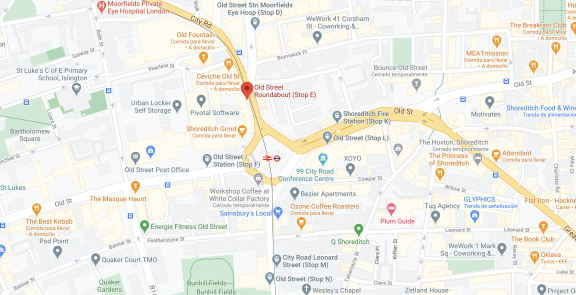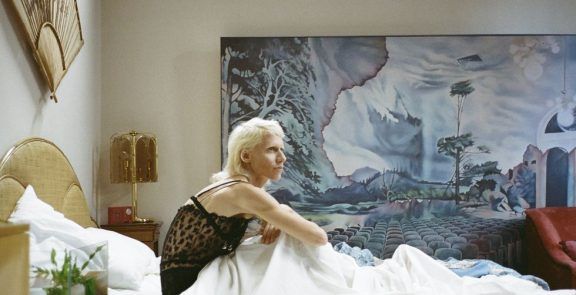

LOEWE: Where are you from?
IN A NUTSHELL:
Origin is an asset that brands in certain categories must explore in order to enhance their credentials and brand power. For those brands and companies whose origin is not particularly relevant, we can seek new excuses to diversify our origins.
THE GREAT STRATEGIC TAKEOUT:
The social relevance of brands as cultural agents does not turn them into museums or history books. Their narrative nature must enable them to construct provable stories that depict their origin and background in the way that is most relevant to today’s audiences.
Why should I read this?
It’s time to review the history of our brand. We can rely on secondary elements from our past in order to be relevant to new audiences and new markets. We cannot lie, but we can take a piece of evidence as a starting point and fantasise from there.
What are we talking about?
LOEWE is one of the luxury brands that has best understood the changes in the environment and addressed its past not as an anchor, but as a source of inspiration to create stories from which to construct the future of the brand.
Changing the way we look at our the past may seem unimportant, but in LOEWE’s case, it radically transformed the brand and enabled it to find a role among contemporary global audiences who seek a balance between contemporary creativity and product truth in luxury.
LOEWE has discovered a middle ground between brands that are overly indebted to their origin, with an almost reverential devotion to it, and those who have completely abandoned their past, regarding it as irrelevant and/or politically incorrect.
The Madrid brand appears to have understood that the city that gave birth to it does not have all the necessary credentials to be relevant in the world of contemporary luxury and lifestyle at the international level. The city’s main global assets in terms of premium offers (Almodóvar, leisure, art and nightlife) do not generate interest in the world of luxury.
LOEWE, instead of forgetting its origin or trying to extract something new from the city, changes the focus and reviews its past in search of geographically anchored stories that resonate with the world. By looking at Spain from this perspective, a clearly referential space emerges: Ibiza.
By taking advantage (and serving as the RTB) of the fact that the LOEWE creative director visited the island at a young age, the brand shifts the focus to Ibiza, specifically to a lifestyle store, Paula’s Ibiza. It creates a new language and a completely fresh proposal that resides in the truth of the brand. In all press releases, LOEWE says that for JW Anderson (the brand’s creative director) “Ibiza has always been very dear and personal to me: it’s my deepest tie with Spain, harking back to childhood and adolescent memories”.
This refocusing allows it to compete with other brands that use iconic seaside locations (Capri, Côte d’Azur…) as an excuse to launch seasonal collections (called capsules in fashion and which usually serve to extend the brands’ field of expression without compromising the essence of their DNA) and which gradually permeate the bulk of the brand’s overall collection.
This masterful strategy has transformed LOEWE from within, shifting its focus to the past and incorporating approaches that are more diverse, collaborative and worthwhile. Instead of looking for relevant themes outside of LOEWE in an opportunistic manner, it has incorporated (and amplified) into the brand a personal and subjective story of its current designer.
Links and what to focus on:
LOEWE x Paula’s Ibiza II | Close To Paradise (Full Film)
Loewe Paula’s Ibiza
- The way the island narrative is explained
- The evolution of the brand’s presence in the narrative presented on the island
- The conversion of space into an emotion and how this has allowed it to depart from the physicality of the island
- Art direction and music selection
WHY YOU SHOULD BE INTERESTED:
Our brands can reinforce their relevance by applying a creative, original and narrative strategic approach to their origin. An anecdotal presence in a space, event, situation or activity that is relevant today to audiences and markets can reinforce the brand’s power and help define its past.
What needs does it meet?
Brands need powerful RTBs to justify actions and decisions that break with the established norms. The strategic look at the past as a tool to build relevant assets for the future strengthens brands and companies.
From a strategic perspective:
Managers and strategists often forget that a brand’s past is the main source of legitimacy. But you have to know what, how and where to look at the past in order to construct relevant credentials.
Who might be interested?
All categories, especially those with products, experience, services and content for which their geographical anchoring is relevant in terms of both product truth and differentiation within the category or product leadership.
Where do I implement it?
In the construction and justification of RTBs to expand the brand’s audiences and markets.
How do I implement it?
Rigorously and always based on evidence. Refocusing and/or multiplying the origin of a brand is a major strategic decision.
How innovative is it?
Brands constantly use their geographical origin as a way to justify and anchor their truth. Doing this in a contemporary way allows these spaces to be revisited with an innovative and strategic approach, and for them to be used to inform future decisions.
Key concepts:
Heritage, legacy, history, innovation, truth
I WANT IT FOR MY COMPANY/BRAND. WHAT DO I NEED TO KNOW?
Who is using it already?
In addition to LOEWE, other luxury and lifestyle brands interpret their past creatively. Particularly relevant are Dior and Chanel, which have extended their foundational footprint beyond Paris in the world of perfume with Granville and Grasse.
Things to keep in mind:
While not all categories can turn their origin into a source or contemporary inspiration, it can be an inspirational strategic asset that feeds innovation and activation.
How do I get a clearer idea?
-
Reading about the past of brands and the way they excite and activate their past (Telva)
How do I share it with my network?
“Perhaps what the brand’s veterans in the factory or the stores have to tell us is more relevant for the future than what we say in our annual report.”


